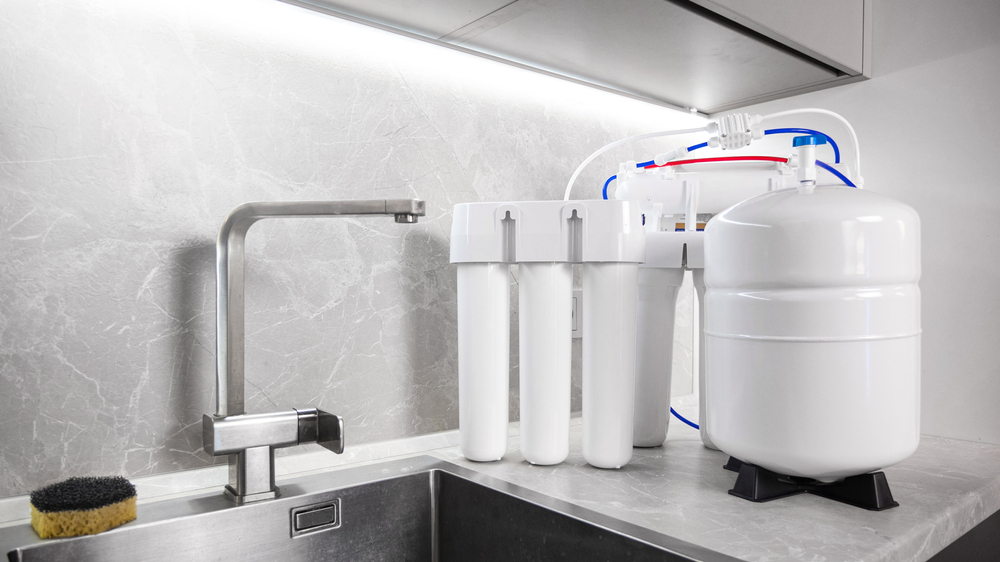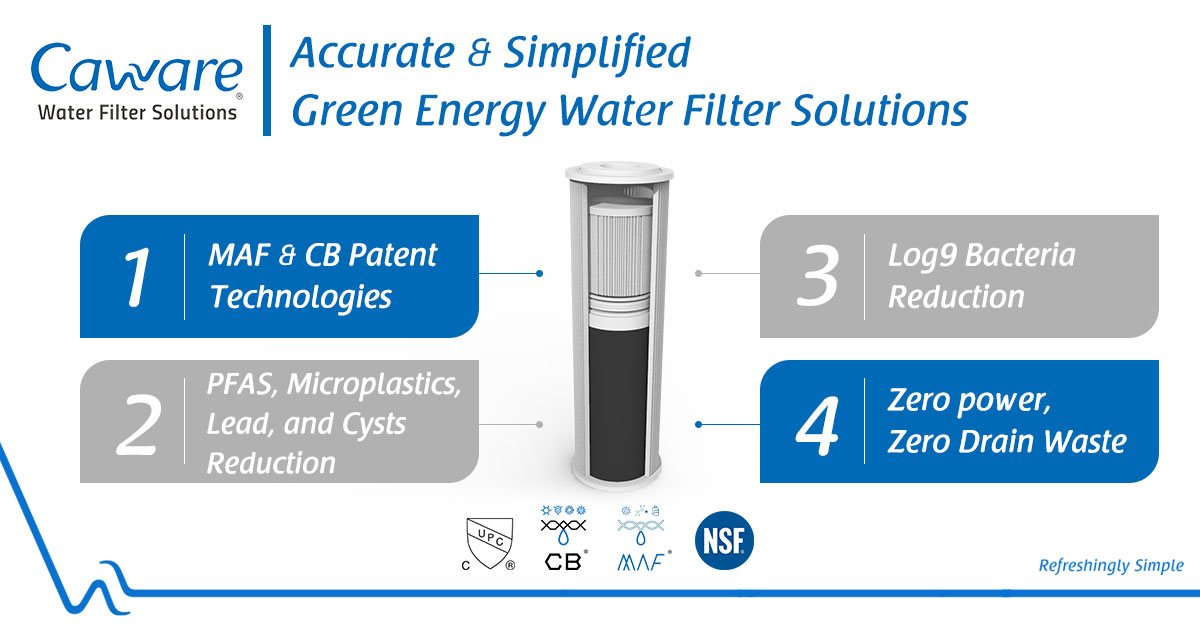
Per- and polyfluoroalkyl substances (PFAS) have become a significant concern for water safety due to their widespread presence and potential health risks. Known as “forever chemicals” because of their persistence in the environment, PFAS are notoriously difficult to remove from water supplies. With growing awareness of the dangers posed by these contaminants, it’s essential to explore the most effective methods for filtering them out. In this article, we’ll examine the role of reverse osmosis (RO) in PFAS removal, compare it to other filtration technologies, and provide guidance on choosing the right water filtration system for your needs.

PFAS are a group of man-made chemicals used in a variety of industries since the 1940s, found in products like non-stick cookware, water-repellent fabrics, and firefighting foams. Unfortunately, their widespread use has led to significant contamination of water sources. PFAS are linked to numerous health problems, including cancer, liver damage, immune system disruption, and developmental issues in children. Because these chemicals are resistant to natural degradation, they accumulate in the environment and in the human body over time.
Given the risks associated with PFAS, effective filtration is crucial. Several methods can reduce or eliminate PFAS from drinking water:
Activated carbon filters operate on the principle of adsorption, where contaminants are trapped in the porous structure of the carbon material. When water passes through the filter, PFAS molecules adhere to the carbon’s surface, removing them from the water.
Activated carbon filters are generally effective at removing long-chain PFAS compounds, such as PFOA and PFOS, which are among the most studied and concerning PFAS. However, their effectiveness can vary depending on the type of PFAS, the filter’s design, and the water’s characteristics, such as temperature, pH, and the presence of other contaminants.
One of the main advantages of activated carbon filters is their relatively low cost and widespread availability. They are also easy to install and maintain, making them a popular choice for household water filtration systems. However, carbon filters have limitations. They are less effective at removing short-chain PFAS, which are increasingly being used as replacements for their long-chain counterparts. Additionally, the effectiveness of carbon filters diminishes over time as the carbon becomes saturated with contaminants, requiring regular replacement to maintain performance.

Reverse Osmosis (RO) is a widely used water purification technology that can effectively remove a broad range of contaminants, including PFAS. RO systems work by forcing water through a semi-permeable membrane under pressure. The membrane’s tiny pores allow water molecules to pass through while blocking larger molecules, such as PFAS and other contaminants.
RO systems are highly effective at removing PFAS from water, including both long-chain and short-chain varieties. The semi-permeable membrane used in RO systems has pores small enough to filter out nearly all PFAS molecules, providing a high level of purification. Studies have shown that RO can reduce PFAS levels in water by up to 99%, making it one of the most reliable methods for ensuring safe drinking water.
Building on the strengths of RO, our advanced filtration technology offers enhanced PFAS removal. Our systems incorporate specialized materials designed to target even the most challenging PFAS compounds. For example, we utilize hollow-fiber membranes under our MAF technology that provide superior filtration efficiency and a longer lifespan with gravity flow compared to traditional RO membranes.
Hence, our filtration systems offer several advantages over conventional methods. Not only do they achieve higher removal rates for a broader range of PFAS, but they also reduce the amount of wastewater produced during the filtration process. Additionally, our systems are designed for easier installation and maintenance, providing a more user-friendly solution for homeowners and businesses alike.
In public facilities, access to safe, contaminant-free drinking water is essential for health and well-being. Public water dispensers must meet high standards of safety and hygiene to prevent the spread of contaminants, including bacteria, PFAS, microplastics, and other emerging compounds.
We offer advanced filtration materials specifically designed for use in public water dispensers under Citi Purist platform. These materials are highly effective at reducing a wide range of contaminants, including bacteria, lead, PFAS, emerging compounds, and microplastics. Our system adapts advanced patent technology – MAF, featuring a 0.1um absolute pore size that filters out bacteria and other pathogens, ensuring compliance with urban water quality regulations.

When choosing a water filtration system for PFAS removal, it’s important to consider the concept of total PFAS. This term refers to the collective measurement of various PFAS compounds present in water, rather than just focusing on individual contaminants like PFOA or PFOS. A filtration system certified for Total PFAS removal ensures that it can effectively reduce a wide array of these persistent chemicals, offering more comprehensive protection for your water supply.
Consider the following factors when selecting the right system:
Caware’s filtration materials are engineered to meet the highest standards in water purification, proudly achieving the rigorous NSF 53 certification for Total PFAS removal. This means our filtration solutions are certified for the removal of microplastics, emerging contaminants, and lead, providing an all-encompassing defense against various water-borne hazards. When you choose Caware, you’re choosing trusted, certified technology that safeguards your health and ensures cleaner, safer water for your home or business.
To learn more about how our advanced filtration systems can help protect you and your family from PFAS and other contaminants, we invite you to explore our product offerings. Visit our website to find the right solution for your needs and ensure your water is as clean and safe as possible.